Chapter: Anatomy of Flowering Plants: An Introduction to Structure and Development : Organs, Cells and Tissues
Plant Cell Inclusions
Cell Inclusions
Many
cells possess non-protoplasmic contents such as oils, mucilage (slime),
tannins, starch granules, calcium oxalate crystals and silica bodies. Both oil
and mucilage are produced in secretory idioblasts which are often larger than
adjacent parenchymatous cells. Tannins are phenol derivatives which are common
in plant cells; they are amorphous, and appear yellow, red or brown in colour
in cells of sectioned material. Cystoliths are cellulose bodies encrusted with
calcium carbonate that occur in epidermal cells in some species (Fig. 4.4); the
body is attached to the cell wall by a silicified stalk.
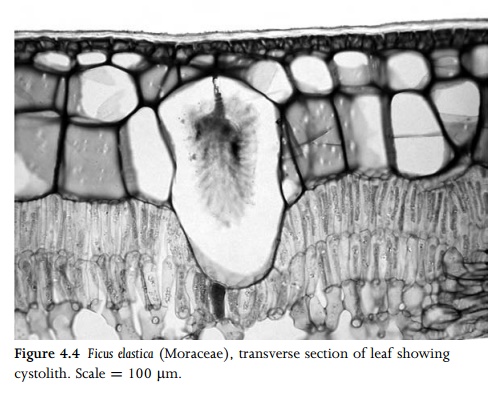
Starch is especially common in storage tissues such as endosperm or in parenchyma adjacent to a nectary. Starch granules are formed in plastids (amyloplasts). They often appear layered due to the successive deposition of concentric rings, and may possess characteristic shapes. For example, in species of Euphorbia, starch grains in laticifers are elongated and sometimes rod-shaped or bone-shaped compared with the more rounded starch grains of neighbouring parenchyma cells (Fig. 1.4).
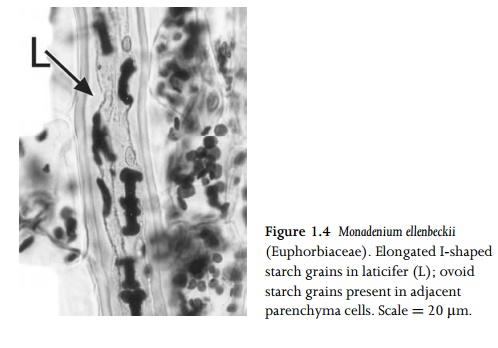
Calcium oxalate crystals (Figs 1.5, 1.13) are borne in crystal idioblasts that can occur in almost every part of the plant, includ-ing both vegetative and reproductive organs82. They are often present near veins, possibly due to transport of calcium through the xylem, and are sometimes associated with air space formation; some aquatic plants possess calcium oxalate crystals projecting into air spaces. Crystals form within vacuoles of actively growing cells and are usually associated with membrane chambers, lamellae, mucilage and fibrillar material. Crystal sand is relatively amor-phous and represents fragmented non-nucleated crystalline particles. Druses (cluster crystals) are aggregated crystalline struc-tures that have precipitated around a nucleation site. Raphides are bundles of needle-like crystals that are borne in the same cell; they occur commonly in monocots. In the monocot family Araceae, raphides are characteristically grooved and sometimes barbed. Styloid crystals are typically solitary, larger and needle-like orrhomboidal; they are highly characteristic of some families, such as Iridaceae.
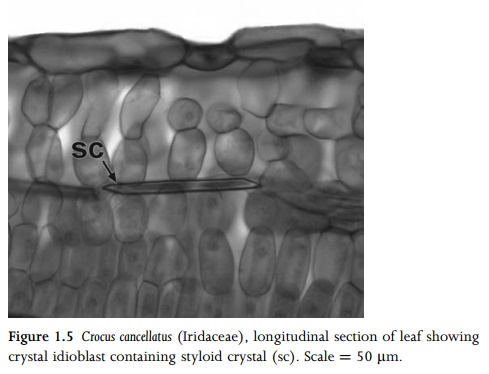
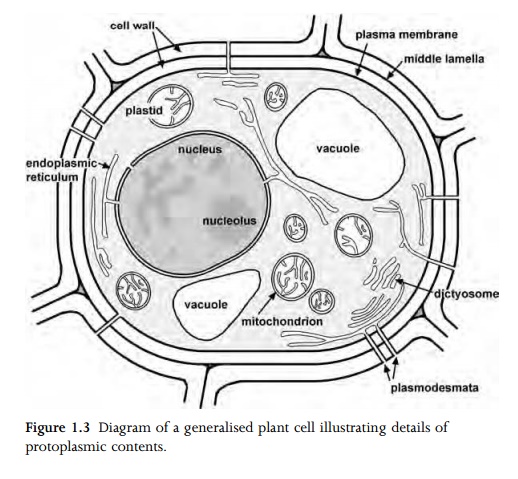
Opaline silica bodies are also a characteristic feature of some plant groups. They occur in all plant parts, often associated with sclerenchyma, though they are rare in roots. In many dicot species they occur in the ray or axial parenchyma cells in secondary xylem. Some families, such as grasses (Poaceae), sedges (Cyperaceae), orchids (Orchidaceae) and palms (Arecaceae), possess character-istic silica bodies contained in well-defined cells, either in the epidermis (e.g. in grasses: Fig. 4.3B) or in vascular bundle sheath cells (e.g. in palms and orchids).
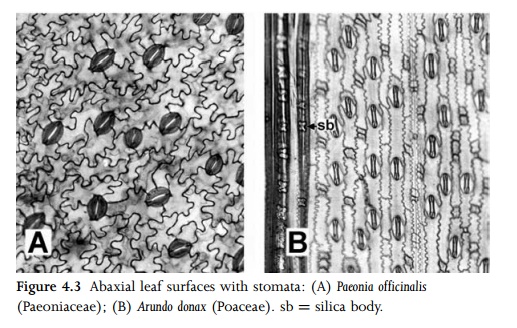
Related Topics